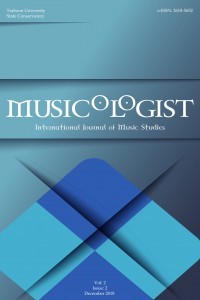Processual Form in Sufi Dhikr Ritual
Processual Form in Sufi Dhikr Ritual
___
- Bell, Catherine. (2009). Ritual Theory, Ritual Practice. New York: Oxford University Press.
- Öngören, Reşat. (2013). Zikir (Dhikr). TDV İslâm Ansiklopedisi. Retrieved from https://islamansiklopedisi.org.tr/zikir (20.06.2022)
- Özervarlı, M. Sait. (2001). Kadir Gecesi (Qadr Night). TDV İslâm Ansiklopedisi. Retrieved from https://islamansiklopedisi.org.tr/kadir-gecesi (20.06.2022)
- Özkan, İsmail Hakkı. (2001). Kaside (Qasida). TDV İslâm Ansiklopedisi. Retrieved from https://islamansiklopedisi.org.tr/kaside (20.06.2022)
- Uzun, Mustafa İsmet. (2000). İlahi (Hymn). TDV İslâm Ansiklopedisi. Retrieved from https://islamansiklopedisi.org.tr/ilahi (20.06.2022)
- Rappaport, Roy. A. (1974). “Obvious Aspects of Ritual” Cambridge Anthropology, 2(1): 3–69.
- Rappaport, Roy. A. 1979). Ecology, Meaning and Religion. Richmond, Calif.: North Atlantic Books.
- Rappaport, Roy. A. (1999). Ritual and Religion in the Making of Humanity. United Kingdom: Cambridge University Press.
- Yayın Aralığı: Yılda 2 Sayı
- Başlangıç: 2017
- Yayıncı: Trabzon Üniversitesi
The Issue of Folklore in Contemporary Author’s Songs in Georgian Folk Music
Sulaymān Bāḳirg̲h̲ānī in the Culture of the Volga Tatars: The Phenomenon of the “Bāḳirg̲h̲ān kitābī”
Tuning Systems of Traditional Georgian Singing Determined from a New Corpus of Field Recordings
Frank SCHERBAUM, Nana MZHAVANADZE, Sebastian ROSENZWEİG, Meinard MÜLLER
Processual Form in Sufi Dhikr Ritual
